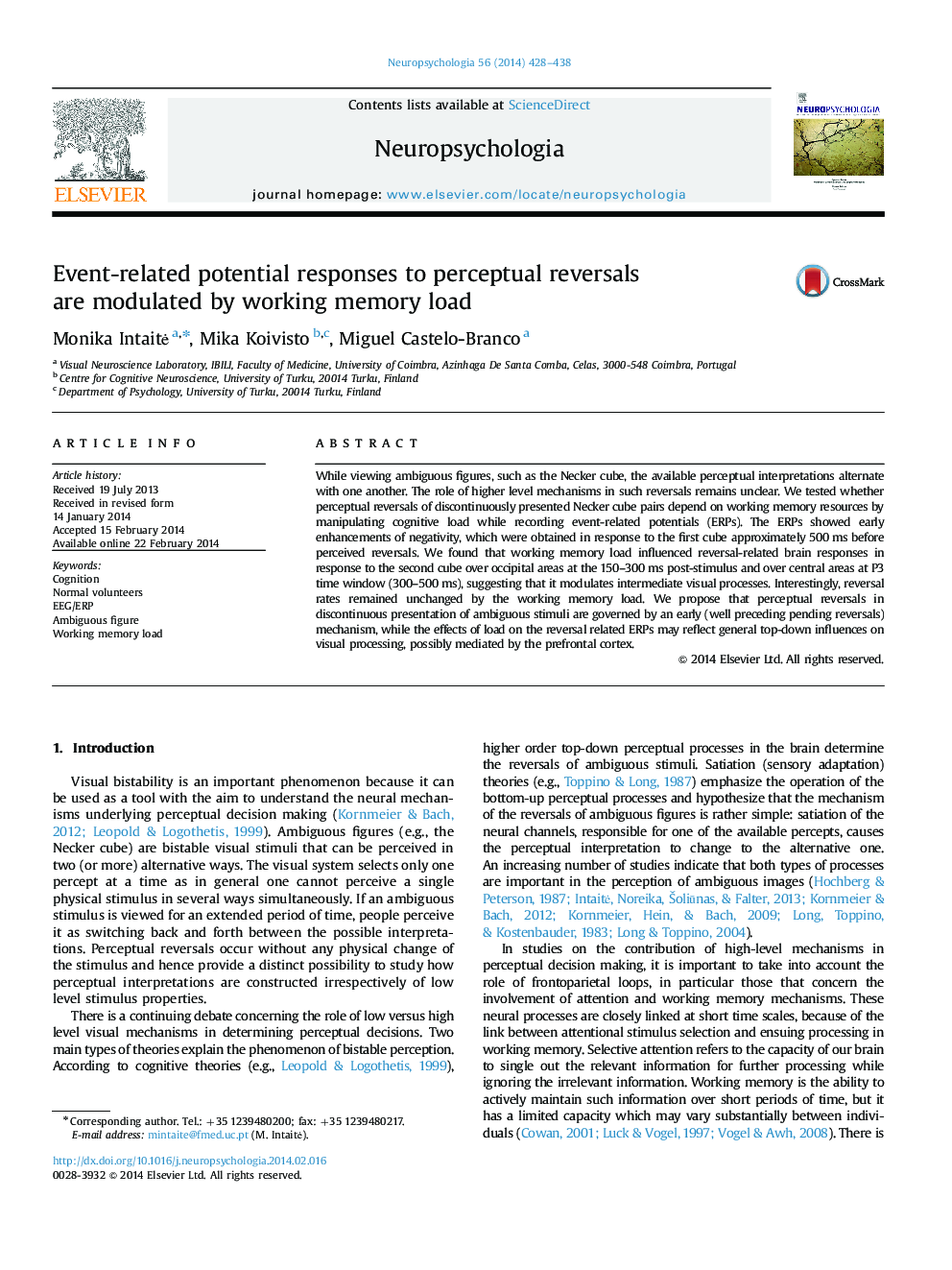| Article ID | Journal | Published Year | Pages | File Type |
|---|---|---|---|---|
| 7321795 | Neuropsychologia | 2014 | 11 Pages |
Abstract
While viewing ambiguous figures, such as the Necker cube, the available perceptual interpretations alternate with one another. The role of higher level mechanisms in such reversals remains unclear. We tested whether perceptual reversals of discontinuously presented Necker cube pairs depend on working memory resources by manipulating cognitive load while recording event-related potentials (ERPs). The ERPs showed early enhancements of negativity, which were obtained in response to the first cube approximately 500Â ms before perceived reversals. We found that working memory load influenced reversal-related brain responses in response to the second cube over occipital areas at the 150-300Â ms post-stimulus and over central areas at P3 time window (300-500Â ms), suggesting that it modulates intermediate visual processes. Interestingly, reversal rates remained unchanged by the working memory load. We propose that perceptual reversals in discontinuous presentation of ambiguous stimuli are governed by an early (well preceding pending reversals) mechanism, while the effects of load on the reversal related ERPs may reflect general top-down influences on visual processing, possibly mediated by the prefrontal cortex.
Related Topics
Life Sciences
Neuroscience
Behavioral Neuroscience
Authors
Monika IntaitÄ, Mika Koivisto, Miguel Castelo-Branco,
